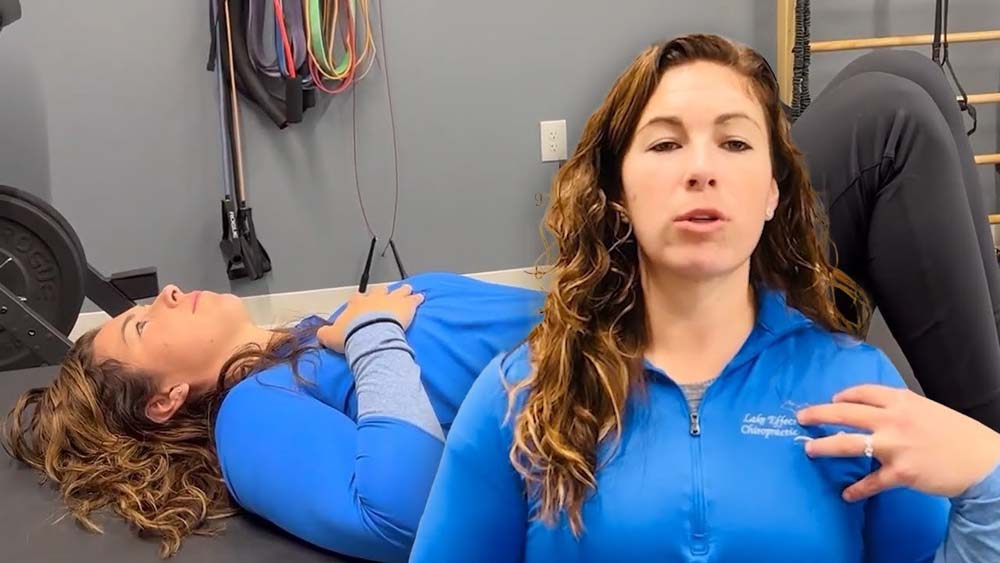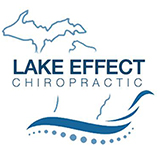
The way you breathe impacts you from a muscle and joint perspective.
Poor breathing mechanics can lead to neck pain, core stability issues, low back pain, and other issues. Who knew that a simple in-out process could be so complex?
Normal breathing, also known as lung ventilation, is an automatic and seemingly effortless action. Breathing involves inspiratory (breathing in) expansion and expiratory (breathing out) contraction of the rib cage. The act of normal breathing has a relatively constant rate and volume, or amount of air that enters the lungs.
However, breathing is a coordinated effort! The act of breathing requires our lungs to expand as well as a series of coordinated muscle efforts from the chest wall, the rib cage, movement of large and small muscles, nerve signaling, ligament stretch, and even the spine. Although we often think of our lungs as being within our chest, the tops of our lungs extend quite high: almost to the very base of our neck and shoulders.
When breathing issues arise and the lungs aren’t the cause, other sources like the muscles and bones must be taken into consideration. In medical literature, the term “dysfunctional breathing” refers to a group of disorders: paradoxical breathing (upper chest breathing), erratic breathing, breath holding, and breathing too deeply or erratically (hyperventilation syndrome).
For this article, we will focus on the first: paradoxical breathing.
And, while these disorders can create significant oxygenation deprivation problems, the focus of this article will be on the biomechanical effects of poor breathing mechanics.
It is important to assess breathing mechanics to determine if someone is using the appropriate muscles to engage in this vital task. Breathing is a complex activity involving the rib cage, joints of the spine and ribs, ligaments, connective tissues, muscles, and the lungs. Breathing performance is drastically affected if one or more of these structures are injured, damaged, or otherwise unable to work properly. One such common condition is upper chest breathing.
What is chest breathing?
Paradoxical breathing, or chest breathing, is a sign that you aren’t breathing properly. Chest breathing refers to chest, midback, and lower neck muscles that become overworked due to poor biomechanics.
Normal breathing involves expansion and contraction of the rib cage with our breath. Breathing also uses the diaphragm, a dome-shaped muscle located at the base of our rib cage, below the lungs and heart. The diaphragm is a major muscle mover that works with the lungs to inhale and exhale. During inhalation, the lungs expand, and the diaphragm pushes down to make room for the lungs to expand with air. This presses the rib cage outward. During exhalation, the diaphragm moves up, which helps move air out of your lungs and brings the ribs inward.
During paradoxical breathing, this action is reversed. During inhalation, the lungs still expand, but the diaphragm contracts. During exhalation, the lungs relax, but the diaphragm expands.
As a result, the chest and lower neck muscles become overactivated. This targeted group of muscles work together to compensate for the diaphragm. They help inflate the lungs by pulling on the rib cage to expand the upper portion.
These extra, or accessory, breathing muscles in the chest and lower neck still have their own responsibilities to perform as they help with our breathing activity.
The result is tight, achy muscles that aren’t effective at either job.
The upper back and thoracic spine may also become stiff due to poor muscle engagement from the diaphragm, resulting in muscle tightness. Sometimes, this can even extend into the low back!
By itself, chest breathing is not necessarily a bad or pathological condition. Certain scenarios are noted for chest breathing: some examples include a sudden sprint across a lawn or a pang of anxiety while taking a test. However, when chest breathing becomes our normal method of breathing, the result is the upper chest expanding and contracting with each breath while the abdominal area does not function properly. The diaphragm is not used well during chest breathing.
What can happen from chest breathing?
Chest-focused breaths tend to be short and quick. Chest breathing uses only a small portion of the lungs and delivers a relatively minimal amount of oxygen to the bloodstream. The result is poor oxygenation to the body’s soft tissues.
In addition, excessive chest breathing causes the muscles of the chest, neck, upper back, and lower back to work too much. This can lead to tightness and strain to these areas due to overuse. The muscles become tight and ropy to the bare eye.
Chest breathing is a form of diaphragmatic dysfunction that can have many causes including trauma to the chest wall, mineral deficiencies, weak respiration muscles, sleep apnea, and nerve injury.
Symptoms of chest breathing can include:
- Frequently waking up at night
- Shortness of breath
- Excessive sleepiness that doesn’t respond to additional sleep
- Diminished or poor exercise performance
- Muscle soreness in the neck and chest
- Abnormally fast breathing
- Poor posture in the upper back
- Rounded shoulder posture
- Tight musculature along the front of the neck
Do I chest breathe?
Maybe. Here is a simple test and exercise you can do at home to improve your breathing.
Description: Breathing test to assess if patient is a stomach breather or chest breather.
How to perform:
- Lay on a comfortable surface on your back with your knees bent.
- Place one hand on your chest and the other hand on your stomach.
- Take 5 normal deep breaths and take notice of your breathing.
Up to 80% of breathing should come from the belly rising and falling; 20% should come from the chest rising and falling.
Chest breathing is more dominant than belly breathing when the belly barely moves. Here, the upper chest expands more than the abdomen, and the shoulders elevate towards the ears during inspiration. Excessive chest breathing causes overuse of the neck musculature and can lead to pain syndromes in the neck, shoulders, and upper back.
Here is a video from our friends at ChiroUp you can reference for proper breathing patterns initiated at the abdomen:
How can I learn more about changing my chest breathing?
There are a few quick exercises you can perform to help begin retraining your diaphragm and other breathing muscles to work effectively. Here’s a common one:
Corrections for Chest Breather:
- Place a light book over the stomach and focus on elevating and lowering it during inspiration and expiration.
- Lay on back.
- Push belly outward.
- Pull belly button down towards floor.
- Repeat ten repetitions for two sets.
If your chest breathing has occurred over time or because of trauma, nerve injury, or other causes, other interventions may be required. It is not uncommon to manage this condition with targeted exercises, postural improvements, and even changes to your workplace setup to help proper muscle function.
How We Address Chest Breathing
Our goal is to not only provide you with the correct diagnosis of your breathing pattern, but also determine the underlying root cause and create an individualized treatment plan specifically for you. We have many tools in our toolbox to conduct an effective evaluation and create an appropriate treatment.
Conservative care is a keystone for our Bay City Chiropractic practice. We have many treatment options for you! A few ones include specific stretches for muscles and tendons of the affected muscle, joint mobilization of the thoracic spine near the ribs, tendon loading and specific exercises to strengthen the surrounding muscles, hands-on soft tissue work into muscles, changes in exercise routine or modifications at work or at home, home exercise and stretching programs, and more.
All of these depend on if your chest breathing is caused by poor biomechanics of the muscles and joints. If your chest breathing is caused by mineral deficiencies, we may need to co-manage your care with a primary physician or specialist to determine the best course of action to address the root cause. If there has been trauma to the chest wall, such as a motor vehicle accident, a full examination is imperative and may require imaging. The best way to determine your treatment approach is to make an appointment in our office for a full evaluation.
If you are dealing with poor life performance due to chest breathing, muscle tightness of the chest wall, upper back, or neck, excessive daytime sleepiness, or other symptoms of chest breathing, give us a call. We are happy to evaluate you and often can provide you with a same-day examination. Call our office at (989)686-6808 we are located at 203 E. Midland St. Bay City, MI 48706, near the Sage Library.
